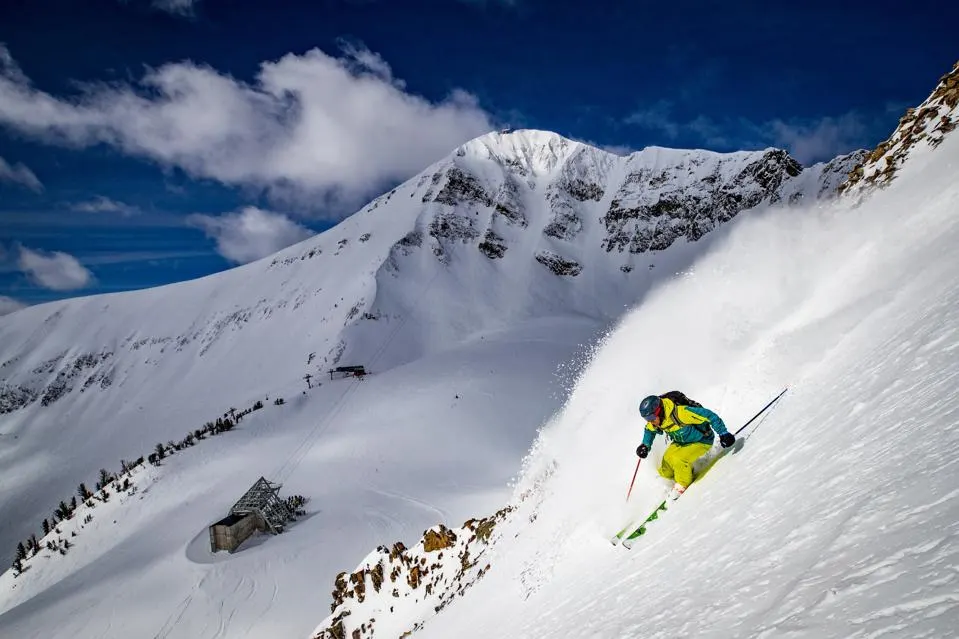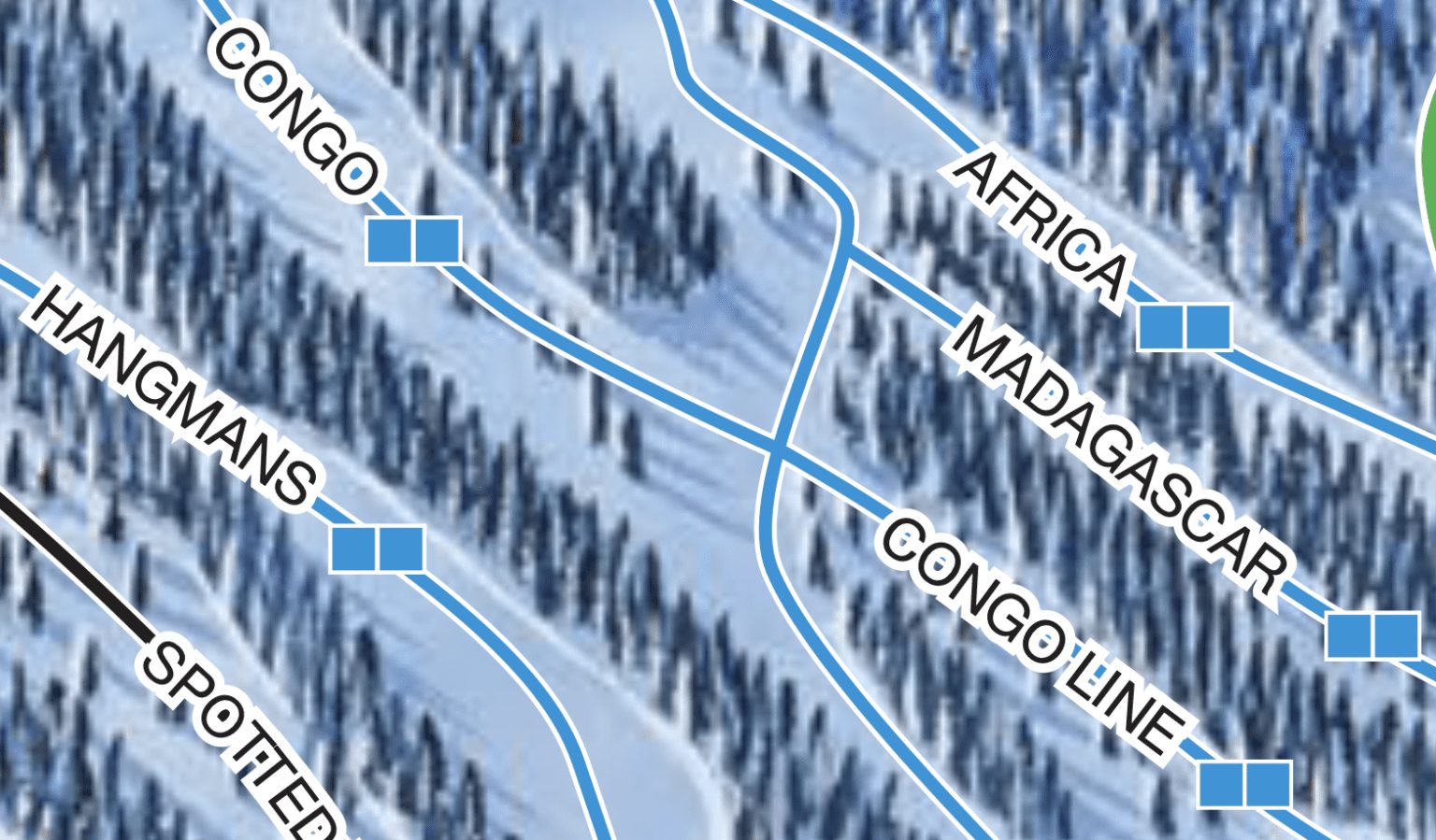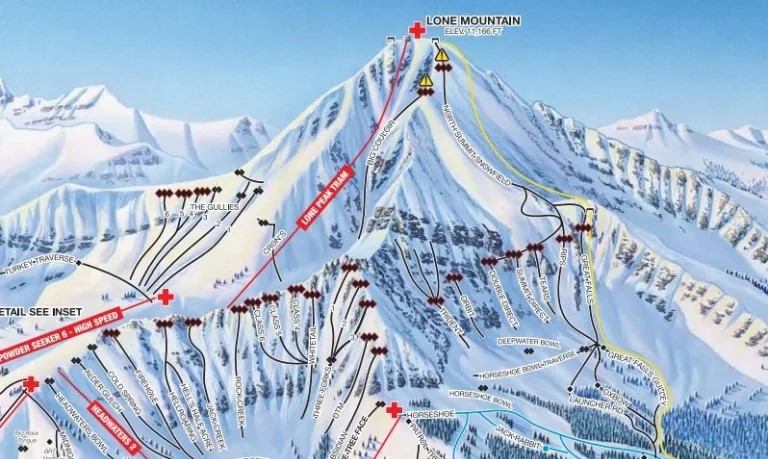
Big Sky Resort recently unveiled its trail map for the upcoming season which included some noteworthy changes. The most exciting was the upgraded Lone Peak Tram, but another significant change was the introduction of a new “double blue” terrain rating to denote an advanced intermediate run.
Big Sky is well known for having impressive terrain variety across its massive 5,850-acre footprint and the new double blue classification is aimed at providing more specificity so guests can make terrain decisions more confidently. As you can probably guess, the double blue rating describes a trail with a difficulty level somewhere between blue squares and black diamonds.

What’s the reason?
The change is due to Big Sky realizing that some of the green-rated runs on the mountain had steep headwalls and were more indicative of a blue rating. This created a trickle effect as some of the more traditional blue runs needed to be recalibrated to the new double blue to reflect their steeper pitch accurately. Looking at the new 2023/24 Winter Trail Map, approximately 15% of the resort’s terrain is now rated double blue.
This is not the first time a resort has created an advanced intermediate rating for its slopes. The concept isn’t very common but has been around for years. Winter Park, CO, and Telluride, CO, along with some other resorts have had blue/black runs which express the same thing as double blue.
The new trail rating is also not the first time Big Sky has introduced a new trail rating classification. Back in 2019, the resort designated certain trails as triple black diamonds to increase guest education and awareness of the risks of skiing high alpine, high-consequence terrain. The methodology for designating trails as a triple black diamond was to inform guests of exposure to uncontrollable falls along a steep, continuous pitch, route complexity, and high-consequence terrain.

Many are applauding Big Sky for taking the steps to be more transparent about the difficulty level of its trails. More accurate ratings are better than less accurate, especially since ski resorts identify their trails and slopes based on their mountains and not against other mountains or a standard industry rating system. There can be a significant difference between an “easy blue” (single blue) versus a “hard blue” (double blue) for a progressing skier.
Do we need a standardized rating system for slope difficulty?
There is currently no governing body that provides oversight into how ski resorts classify their runs. This can provoke skiers to encounter inconsistencies in the difficulty of the trails when skiing at different ski areas. A green run at one resort might be rated blue at another. The differences can confuse some and can even lead to dangerous situations if riders end up on a trail that is outside their skill level.
Does having a broader spectrum of trail ratings make sense? It probably does, but without a standardized definition, it could lead to more confusion. Do you call it double blue, blue/black, or dark blue? What about double green or blue circles? If a resort wants to confuse its guests, it could designate a purple triangle rating.
One thing is clear: some ski areas need more than the normal green circle, blue square, and black diamond trail rating system. We applaud Big Sky for being a trailblazer in this area.